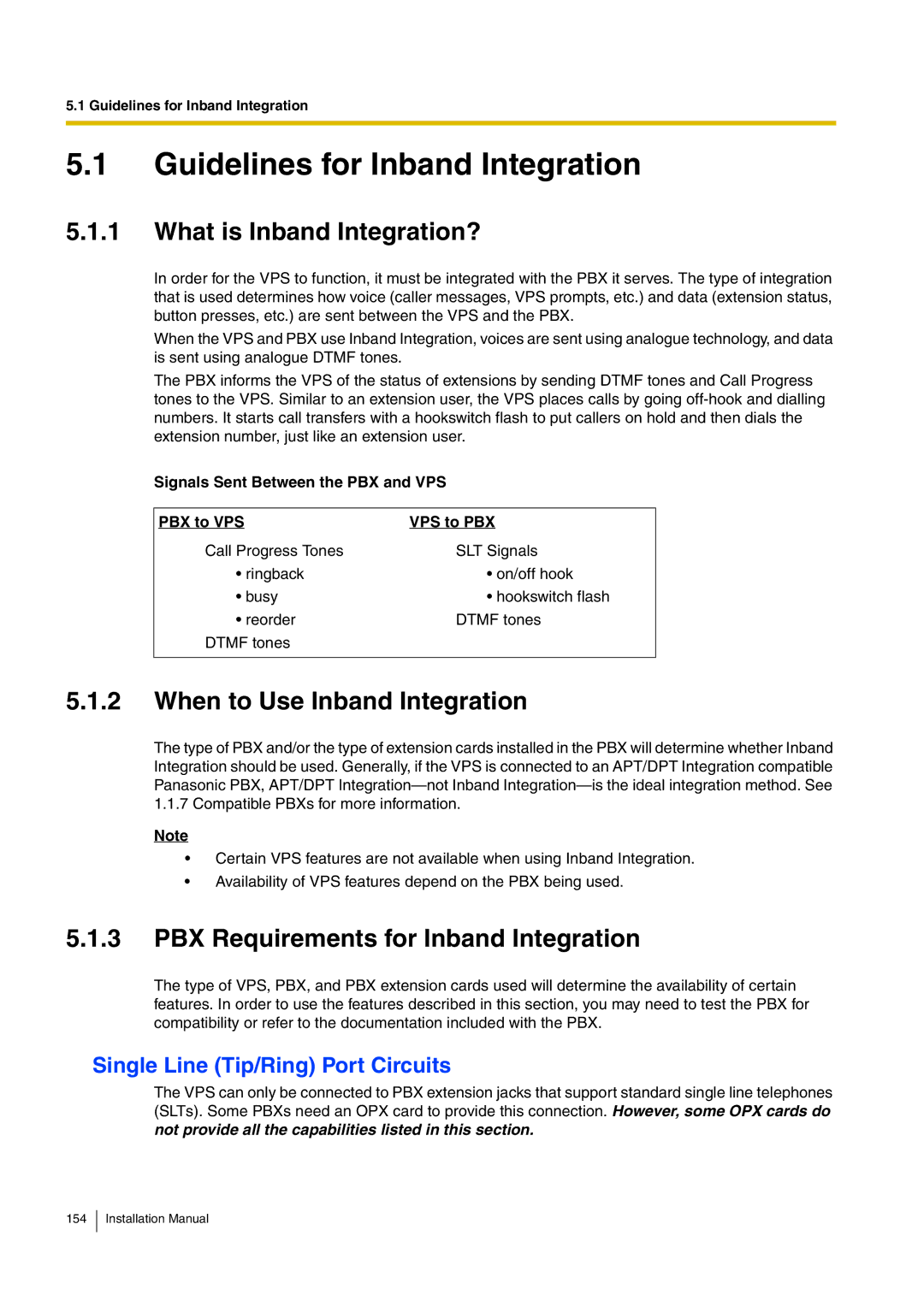
5.1 Guidelines for Inband Integration
5.1Guidelines for Inband Integration
5.1.1What is Inband Integration?
In order for the VPS to function, it must be integrated with the PBX it serves. The type of integration that is used determines how voice (caller messages, VPS prompts, etc.) and data (extension status, button presses, etc.) are sent between the VPS and the PBX.
When the VPS and PBX use Inband Integration, voices are sent using analogue technology, and data is sent using analogue DTMF tones.
The PBX informs the VPS of the status of extensions by sending DTMF tones and Call Progress tones to the VPS. Similar to an extension user, the VPS places calls by going
Signals Sent Between the PBX and VPS
PBX to VPS | VPS to PBX |
Call Progress Tones | SLT Signals |
• ringback | • on/off hook |
• busy | • hookswitch flash |
• reorder | DTMF tones |
DTMF tones |
|
|
|
5.1.2When to Use Inband Integration
The type of PBX and/or the type of extension cards installed in the PBX will determine whether Inband Integration should be used. Generally, if the VPS is connected to an APT/DPT Integration compatible Panasonic PBX, APT/DPT
Note
•Certain VPS features are not available when using Inband Integration.
•Availability of VPS features depend on the PBX being used.
5.1.3PBX Requirements for Inband Integration
The type of VPS, PBX, and PBX extension cards used will determine the availability of certain features. In order to use the features described in this section, you may need to test the PBX for compatibility or refer to the documentation included with the PBX.
Single Line (Tip/Ring) Port Circuits
The VPS can only be connected to PBX extension jacks that support standard single line telephones (SLTs). Some PBXs need an OPX card to provide this connection. However, some OPX cards do not provide all the capabilities listed in this section.
